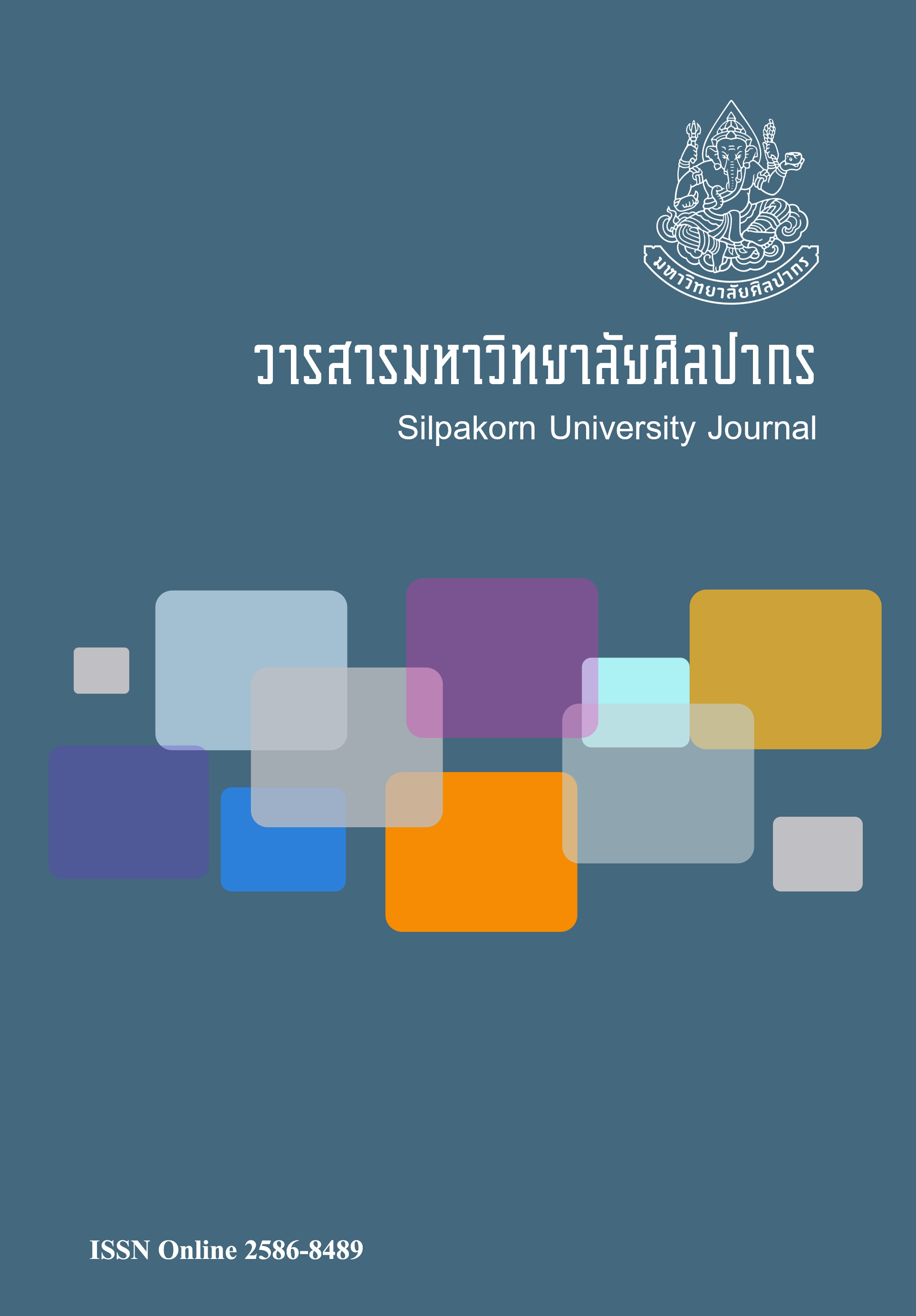พฤติกรรมเชิงสร้างสรรค์ของบุคลากร ที่มีความสำคัญต่ออุตสาหกรรมไมซ์ของประเทศไทย (Creative behavior of staff which is critical to Thailand’s MICE industry)
Main Article Content
Abstract
อุตสาหกรรมไมซ์ของประเทศไทยมีความต้องการบุคลากรอีกเป็นจำนวนมาก เพื่อรองรับการเจริญเติบโตอย่างต่อเนื่อง บุคลากรที่จะเข้ามาทำงานในอุตสาหกรรมนี้ จำเป็นต้องมีทักษะ ความรู้ความสามารถที่หลากหลาย เนื่องจากลักษณะงานในอุตสาหกรรมไมซ์เป็นงานที่มีความท้าทาย พฤติกรรมเชิงสร้างสรรค์จึงมีความสำคัญเป็นอย่างมากต่อบุคลากรในอุตสาหกรรมไมซ์ของประเทศไทย จากการทบทวนวรรณกรรมและวิเคราะห์ผลงานวิชาการต่างๆ พบว่า บุคคลที่จะเข้ามาทำงานในอุตสาหกรรมไมซ์จะต้องมีการแสดงออกเชิงพฤติกรรมอย่างสร้างสรรค์ อันประกอบด้วย 1) เป็นตัวของตัวเอง 2) ชอบทำสิ่งที่ซับซ้อน ยอมรับในสิ่งที่ไม่แน่นอนและสิ่งที่เป็นข้อขัดแย้ง 3) มีความมุ่งมั่น 4) มีความคิดอิสระ 5) มีอารมณ์ขัน 6) มีความยืดหยุ่น 7) ชอบทำสิ่งที่แปลกใหม่ 8) ช่างสงสัย ชอบตั้งคำถาม 9) มีนิสัยคิดหาคำตอบด้วยตนเอง 10) มีความฉับไวที่จะมองเห็นปัญหาได้อย่างรวดเร็วและชัดเจน 11) กล้าคิด กล้าแสดงออก และ 12) มีความสามารถในการแก้ปัญหา
MICE Industry in Thailand requires more human resources in order to support the continuous growth of the industry. Staff in this industry requires skills and versatility due to the challenges in MICE Industry. Creative behavior plays an important role in Thailand’s MICE Industry. Thus, staff in this industry has to adopt creative behaviors which consist of 1) Self-reliance, 2) Complexity favor, 3) Determination, 4) Freedom of mind, 5) Sense of humor, 6) Flexibility, 7) Being a neophile, 8) Being Skeptical, 9) Self-problem solving, 10) Being able to quickly detect and clarify problem, 11) Self-confident, and 12) Being able to solve problems.
Downloads
Article Details
References
Amabile, T. M. (1998). How to kill creativity. Harvard Business Review, 76, 76-87.
Amabile, T. M., Barsade, S. G., Mueller, J. S., & Staw, B. M. (2005). Affect and creativity at work. Administrative Science Quarterly, 50(3), 367-403.
Barron, F. (1988).Putting creativity to work. In R. J. Sternberg (Ed.), The nature of creativity. New York: Cambridge University Press.
Buddhawitheeborihan. (2005). Assertive creativity (ความกล้าแสดงออกอย่างสร้างสรรค์). [Online]. Retrived June 10, 2015 from http://www.budmgt.com/topics/top02/assertive.htm
Chae, S., Seo, Y., & Lee, K. (2015). Effect of task complexity on individual creativity through knowledge interaction: A comparison of temporary and permanent teams. Computers in Human Behavior, 42, 138-148.
Davis, G. A. (1983). Creativity is forever. Dubuque, IA: Kendall/Hunt Publishing.
Department of Curriculum and Instruction Development. (2001). Creative thinking (ความคิดสร้างสรรค์). Bangkok: Author.
Drazin, R., Glynn, M. A., & Kazanjian, R. K. (1999). Multilevel theorizing about creativity in organizations: A sensemaking perspective. Academy of Management Review, 286–307.
Feist, G. J. (1998). A meta analysis of personality in scientific and artistic creativity.Personality and Social Psychology Review, 2(4), 290-309.
Freud, S. (1900). The interpretation of dreams. S. E., 4-5.
Gero, J. S.(1992). Creativity, emergence and evolution in design. Second International Roundtable Conference on Computational Models of Creative Design, Sydney, Australia, 1-28.
Gorney, E. (2007). Dictionary of creativity: terms, concepts, theories and findings in creativity research. [Online]. Retrieved from http://creativity.netslova.ru/
Jansuksri, P. (2008). The Thai learning and teaching handbook, creative thinking and writing: essay, summary, and conclude for grade 4-12 (คู่มือการเรียนการสอนภาษาไทย คิดและเขียนเชิงสร้างสรรค์ : เรียงความ ย่อความ และสรุปความ ช่วงชั้นที่ 2-4). Bangkok: Office of the Basic Education Commission.
Jaroenwisan, K. (2009). Appropriate marketing model of venues for MICE industry in Thailand (รูปแบบการตลาดที่เหมาะสมของสถานที่จัดงานสำหรับอุตสาหกรรมไมซ์ในประเทศไทย). Doctoral dissertation, Maejo University,Chiang Mai, Thailand.
Kind, S. (2015). 2015 Perspectives on MICE Industry in ASEAN. MICE Journal, (1), 7.
Kirton, M. J. (1994). Adaptors and innovators: styles of creativity and problem solving. Routledge, London.
Maher, M. L., Merrick, K., & Saunders, R. (2007). Achieving Creative Behaviour Using Curious Learning Agents. Architectural Science Review.
Maslow, A. (1968). Toward a psychology of being. Van Nostrand, Reinhold, New York.
Oldham, G. R., & Cummings, A.(1996). Employee creativity: personal and contextual factors at work. Academy of Management Journal, 39, 607-634.
Phuviphadavat, S. (2001). A techniques of creative thinking promotion (เทคนิคการส่งเสริมความคิดสร้างสรรค์) (7th ed.). Bangkok: Thai Watana Panich.
Prapluettrakul, T., & Wuttimethee, Y. (2011). The organizational management model that will lead to competitive advantage in electrical and electronic industries (ตัวแบบการจัดการองค์การเพื่อความได้เปรียบในการแข่งขันในอุตสาหกรรมไฟฟ้าและอิเล็กทรอนิกส์). Journal of Business Administration, 34(129), 25-40.
Pryor, K., Haag, R.,& O’Reilly, J. (1969).The creative porpoise: training for novel behaviour. Journal of the Experimental Analysis of Behaviour, 12(4), 653-661.
Razik, T. (1976).Programming creative behaviour. British Journal of Education Technology, 3(7), 5-21.
Saunders, R., & Gero, J.S. (2001). The digital clockwork muse: a computational model of aesthetic evolution.The AISB’01 Symposium on AI and Creativity in Arts and Science, SSAISB.
Storr, A. (1989). Solitude. Free Press, NY.
Suraphee, W., & Phimonsomphong, C. (2013).The study of employees’competency requirement in MICE industry of Thailand (การศึกษาความต้องการสมรรถนะของบุคลากรในอุตสาหกรรมการจัดประชุม นิทรรศการ และการท่องเที่ยวเพื่อเป็นรางวัลของประเทศไทย). Journal of Business, Economics and Communications, 8(2), 82-88.
Surasit, P. (2006). Creative writing in journalism (การเขียนสร้างสรรค์เชิงวารสารศาสตร์). Bangkok: Saengdao.
Tantisilpanon, N. (2013). MICE industry-a new industry that you should be paying attention to. (อุตสาหกรรมไมซ์–อุตสาหกรรมใหม่ที่ประเทศควรให้ความสนใจ). [Online]. Retrived June 9, 2015 from http://tourisminvest.tat.or.th/159-อุตสาหกรรมไมซ์-อุตสาหกรรมใหม่ที่ประเทศควรให้ความสนใจ
Thailand Convention & Exhibition Bureau. (2015). MICE Strategic Approach for AEC in 2015. MICE Journal, (1), 2-3.Woodman, R. W., Sawyer, J. E., & Griffin, R. W. (1993). Toward a theory of organizational creativity. Academy of Management Review, 18(2), 293–321.


